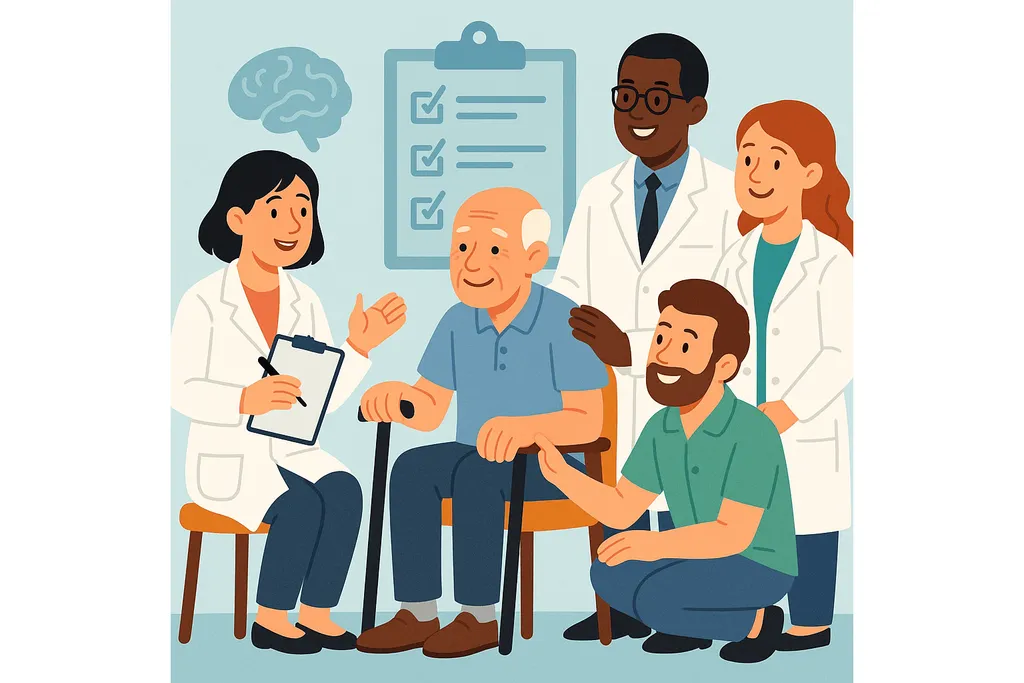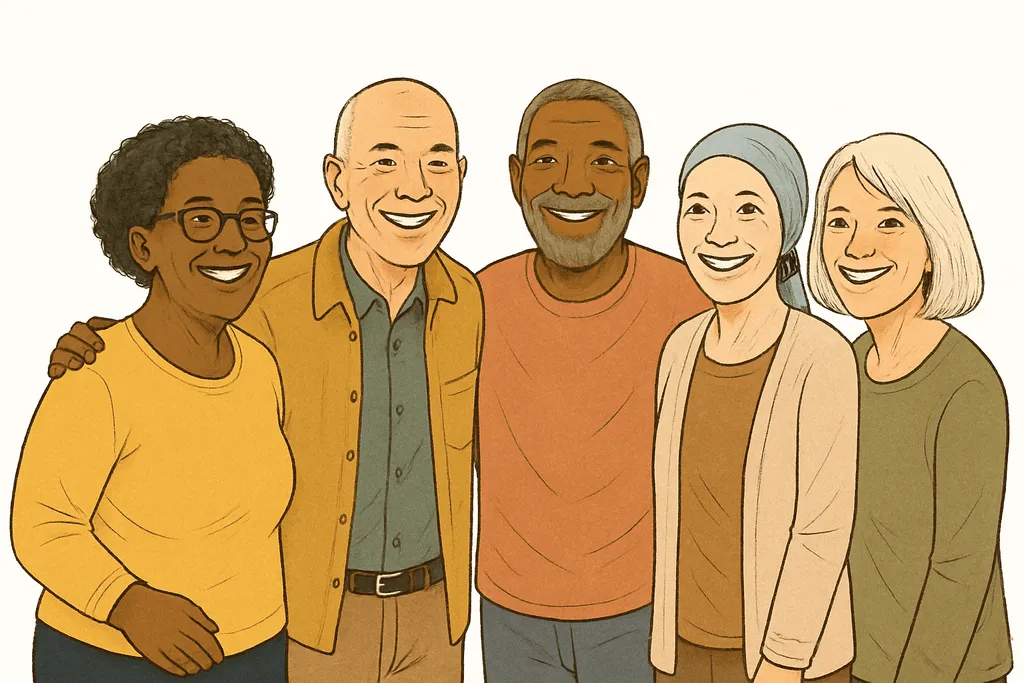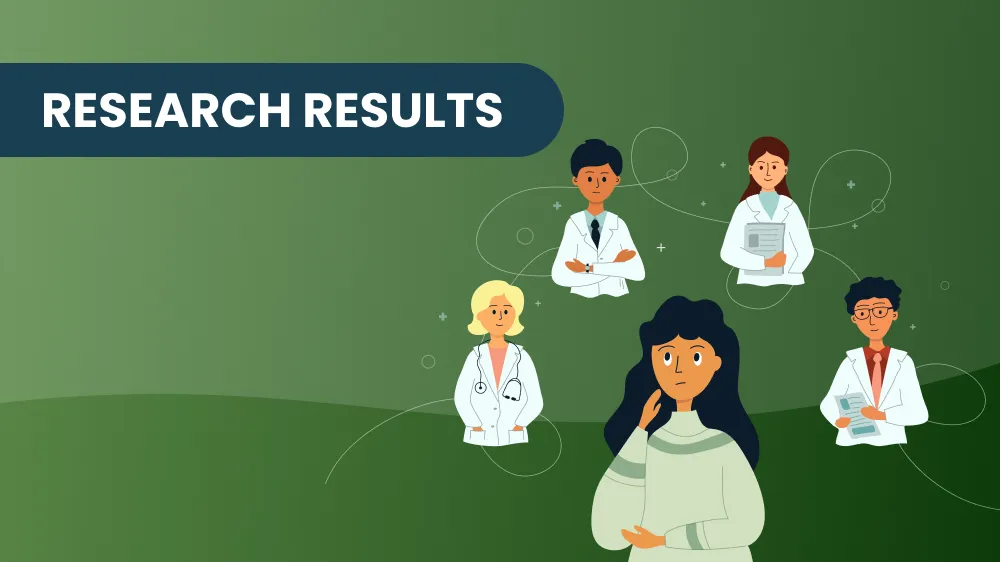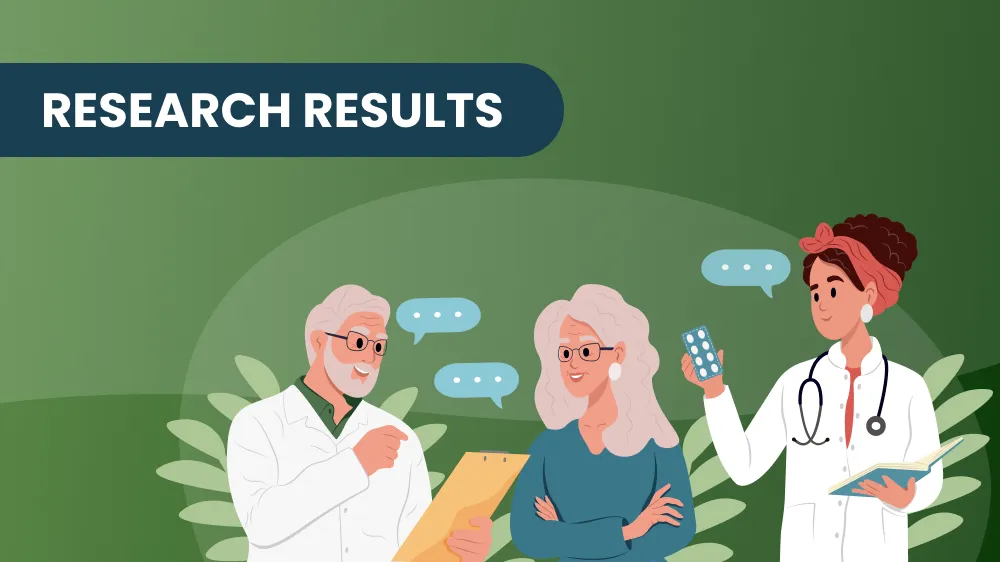Myeloma Round Table: Personalized Medicine - St. Louis, October 16, 2021, Part 2

In theory, there should be no such thing as a one-size-fits-all multiple myeloma therapy since it is known that all myelomas are individual. Recent drug approvals and greater knowledge about diagnostics and procedures have dramatically increased the options available to patients but, as Czech myeloma expert Roman Hajek emphasizes, “it’s mainly about efficacy.” Choices are fine, but it’s more important to find the right combination, the right therapy, at the right time, for the right person. But averages, when applied to individuals can be tricky.
Consider an analogy from World War II. Military researchers spent great effort to make the most comfortable, effective seats for fighter pilots. They took measurements, interviewed pilots, and tested various designs before coming upon a seat with ten common points. Although it was designed to accommodate the needs of the average pilot, it fit no one. Thus the adjustable seat was born and even couples made of tall and short partners would rejoice decades later when they got behind the wheel of their cars. In myeloma, we are not in a place where combinations fit no one, like the seat the researchers built. Rapidly increased survival rates and a growing population living with myeloma are proof of that. But neither are we at the point of designing adjustable seats—personalized medicine—for every patient.
In the second half of the St. Louis Myeloma Crowd Round Table held on October 16, 2021, Dr. Shaji Kumar provides an overview of the concept of immunotherapy, Dr. Ravi Vij describes some of the barriers to better outcomes, and Dr. Surbhi Sidana discusses how they are being used in the clinic today. All three take part in the audience question and answer session.
Ravi Vij, Washington University, Siteman Cancer Center, St. Louis, MO: Personalized Medicine: When and How?
- Although it is still common to treat myeloma patients kind of homogeneously, it has been working. But can we get more precise?
- Drug sensitivity can be predicted by using in-vitro models but these are very difficult and take time
- Patient-specific considerations:
- Age
- Comorbidities
- Psychosocial status
- Performance status
- Treatment history
- Patient preferences
- Several ways to personalize treatment:
- Genetics: treat patient according to their genetic abnormalities; FISH tests only conform to 5% of myeloma patients
- Amount of residual disease in your body as measured by MRD (minimal residual disease); although MRD negative patients seem to do better, this is still not based on scientific evidence
- Some novel ideas:
- Get a deeper insight on specific mutations, in abnormal plasma cells in myeloma
- Is understanding of microenvironment dawn of a new era for personalized therapy?
- In silico engineering: next generation sequencing (NGS) to anticipate mutations
- Neoantigens: sequence mutations to predict how immune system will respond
- Innovative trial designs to ensure personalization
Shaji Kumar, Mayo Clinic, Rochester, MN: Personalized Treatment of Myeloma: Why, When and How?
- Myeloma survival rates have improved, which tells us that treatment has been working
- But improvements are not even across patient populations.
- What is precision medicine?: Seeing a patient as a single individual according to clinical features, medical history, environment, habits, etc.
- Main goal in personalized therapy is to understand the biology of disease: Why do two people with the same disease behave differently?
- Myeloma is genetically complex
- Primary abnormalities are altered genetics at diagnosis, secondary abnormalities show up as time goes by
- Example is chromosome 17: abnormalities in this chromosome leads to loss of function of a specific gene (TP53) often called the “genome guardian”, which kills cells that don’t function correctly anymore.
- How can treatment be individualized?
- Use diverse drug combinations: for example, “Venetoclax” has shown good response by targeting a protein that’s essential for myeloma cells’ survival
- Vary the duration of therapy: when you give therapy for longer periods of time, patients have better outcomes.
- Target a particular level of response: MRD negativity is not always expected. In some patients is a good prognostic factor.
- Clinical trials are essential
- Immunotherapy will lead to a high degree of personalization
- Algorithms to modify and adjust treatment according to age and fitness needs so that same drug can be used by frail and fit patients by adjusting doses and schedules.
Surbhi Sidana, Stanford University, Palo Alto, CA: Personalized Medicine in Myeloma Today
Three main factors:
- Patient Fitness
- Physiologic age matters, sometimes a 70-year-old can be fitter than a 50-year-old
- Fitness and frailty matter.
- Other health issues like heart disease, lung disease, kidney disease or liver disease are determining factors in treatment
- Disease Characteristics: some risk factors which are commonly used to evaluate response to treatment:
- Cytogenetic risk (known by a FISH test)
- Extramedullary disease (like soft tissues, known by CT or PET scans)
- Circulating plasma cells (seen in a blood test)
- M-protein is used to evaluate how your treatment is behaving(abnormal protein produced by myeloma)
- Previous Treatment: and other concomitant diseases and cytogenetics influence the choice of treatment
- Example of Personalized Therapy
- 30 year old patient, healthy but with high risk cytogenetics (like deletion of a gene) will need two medications in maintenance therapy, and a patient the same age with no high risk cytogenetics will only get one drug.
- Example of Relapse
- 63-old-patient, with four previous lines of therapy and cytogenetics t(11:14) on FISH (this means that gene 11 and 14 exchange each other at some point). Goes into progression, with the high risk cytogenetics still present —> venetoclax, not FDA approved, but some clinical trials show that it works on people with t(11;14)
- Sequencing Myeloma Cell Mutations
- Identify mutations on your genetic code that can be targeted by drugs such as: RAF/RAS mutations, IDH2 mutation, CDK mutation
- MRD TESTING
- Assessment of myeloma’s progression is done by using blood tests like M-spike or free light chains, or even bone marrow biopsies.
- “But this disease is like an iceberg: we have a lot more amount of myeloma that’s under the surface that even these tests are not sensitive enough to pick.”
- Asses MRD through:
- Flow cytometry (bone marrow)
- Next generation sequencing (bone marrow)
- PET-scan
- In the future it would be good to have some non invasive tests for MRD
- Keep in mind that there are treatment decisions made based on MRD and that clinical trials are being made to describe in-vitro drug sensitivity
Audience Questions & Answers
(Dr. Borrello took Dr. Kumar’s place for this session.)
- 0:17 - Re: male patient, 75 at diagnosis: I was told I was too old for a stem cell transplant.
- 1:14 - How many actionable mutations do we know of?
- 6:39 - What are the best genetic tests? How does FISH work?
- 8:08 - The dexamethasone doesn’t like me and I don’t either. How long can you tolerate that? And there is something else coming down the line that has the same effect that you can get away from that?
- 10:19 - I’m still a little unclear on the current utility of MRD testing and how it is used to determine treatment.
- 14:13 - Is there any way to assay or quantify T-cell exhaustion?
- 15:37 - If a genetic abnormality is found in an initial bone marrow biopsy (1q gain), and it’s not the same the next time a marrow is done after induction, how likely is it to recur? And does it change?
- 17: 31 - Why would a second transplant be needed?
- 20:44 - MRD negativity is a new term for me. It sounds binary, but is it? Or is there qualitative/quantitative info behind it? Will it be used in this personalized care?
- 23:30 - How specific can a prognosis on a particular individual be when you use algorithms of how long people might live on a specific therapy?
- 26:13 - Is there a different response in CAR T with people who have high risk genetics?
- 27:43 - Are any of you using stored stem cells that were left over from a transplant to boost a patient’s immune system? Are there any uses of stem cell?
- 28:45 - What about a positive MRD patient? In 14 years I haven’t ever gone below an M protein of 0.6 so no question of MRD negativity. I’m presently stable on DARA maintenance and considered low risk. In general, would you consider treating to get to MRD negativity?
- 30:30 - Is MGUS always a precursor to myeloma?
- 32:32 - Why is it that some people are monitored every 3 months and some every 6 months and so forth?
- 34:19 - Why are not tests run more through the general population to try to determine if there is any risk?
- 37:18 - Have you ever changed therapy based on MRD status?
- 40:40 - What is it in the morning- when you get up and you go to the lab, and you go treat patients; what is it that excites you about the opportunity that you can see today and in the foreseeable future?
Thanks to our Round Table Sponsors

In theory, there should be no such thing as a one-size-fits-all multiple myeloma therapy since it is known that all myelomas are individual. Recent drug approvals and greater knowledge about diagnostics and procedures have dramatically increased the options available to patients but, as Czech myeloma expert Roman Hajek emphasizes, “it’s mainly about efficacy.” Choices are fine, but it’s more important to find the right combination, the right therapy, at the right time, for the right person. But averages, when applied to individuals can be tricky.
Consider an analogy from World War II. Military researchers spent great effort to make the most comfortable, effective seats for fighter pilots. They took measurements, interviewed pilots, and tested various designs before coming upon a seat with ten common points. Although it was designed to accommodate the needs of the average pilot, it fit no one. Thus the adjustable seat was born and even couples made of tall and short partners would rejoice decades later when they got behind the wheel of their cars. In myeloma, we are not in a place where combinations fit no one, like the seat the researchers built. Rapidly increased survival rates and a growing population living with myeloma are proof of that. But neither are we at the point of designing adjustable seats—personalized medicine—for every patient.
In the second half of the St. Louis Myeloma Crowd Round Table held on October 16, 2021, Dr. Shaji Kumar provides an overview of the concept of immunotherapy, Dr. Ravi Vij describes some of the barriers to better outcomes, and Dr. Surbhi Sidana discusses how they are being used in the clinic today. All three take part in the audience question and answer session.
Ravi Vij, Washington University, Siteman Cancer Center, St. Louis, MO: Personalized Medicine: When and How?
- Although it is still common to treat myeloma patients kind of homogeneously, it has been working. But can we get more precise?
- Drug sensitivity can be predicted by using in-vitro models but these are very difficult and take time
- Patient-specific considerations:
- Age
- Comorbidities
- Psychosocial status
- Performance status
- Treatment history
- Patient preferences
- Several ways to personalize treatment:
- Genetics: treat patient according to their genetic abnormalities; FISH tests only conform to 5% of myeloma patients
- Amount of residual disease in your body as measured by MRD (minimal residual disease); although MRD negative patients seem to do better, this is still not based on scientific evidence
- Some novel ideas:
- Get a deeper insight on specific mutations, in abnormal plasma cells in myeloma
- Is understanding of microenvironment dawn of a new era for personalized therapy?
- In silico engineering: next generation sequencing (NGS) to anticipate mutations
- Neoantigens: sequence mutations to predict how immune system will respond
- Innovative trial designs to ensure personalization
Shaji Kumar, Mayo Clinic, Rochester, MN: Personalized Treatment of Myeloma: Why, When and How?
- Myeloma survival rates have improved, which tells us that treatment has been working
- But improvements are not even across patient populations.
- What is precision medicine?: Seeing a patient as a single individual according to clinical features, medical history, environment, habits, etc.
- Main goal in personalized therapy is to understand the biology of disease: Why do two people with the same disease behave differently?
- Myeloma is genetically complex
- Primary abnormalities are altered genetics at diagnosis, secondary abnormalities show up as time goes by
- Example is chromosome 17: abnormalities in this chromosome leads to loss of function of a specific gene (TP53) often called the “genome guardian”, which kills cells that don’t function correctly anymore.
- How can treatment be individualized?
- Use diverse drug combinations: for example, “Venetoclax” has shown good response by targeting a protein that’s essential for myeloma cells’ survival
- Vary the duration of therapy: when you give therapy for longer periods of time, patients have better outcomes.
- Target a particular level of response: MRD negativity is not always expected. In some patients is a good prognostic factor.
- Clinical trials are essential
- Immunotherapy will lead to a high degree of personalization
- Algorithms to modify and adjust treatment according to age and fitness needs so that same drug can be used by frail and fit patients by adjusting doses and schedules.
Surbhi Sidana, Stanford University, Palo Alto, CA: Personalized Medicine in Myeloma Today
Three main factors:
- Patient Fitness
- Physiologic age matters, sometimes a 70-year-old can be fitter than a 50-year-old
- Fitness and frailty matter.
- Other health issues like heart disease, lung disease, kidney disease or liver disease are determining factors in treatment
- Disease Characteristics: some risk factors which are commonly used to evaluate response to treatment:
- Cytogenetic risk (known by a FISH test)
- Extramedullary disease (like soft tissues, known by CT or PET scans)
- Circulating plasma cells (seen in a blood test)
- M-protein is used to evaluate how your treatment is behaving(abnormal protein produced by myeloma)
- Previous Treatment: and other concomitant diseases and cytogenetics influence the choice of treatment
- Example of Personalized Therapy
- 30 year old patient, healthy but with high risk cytogenetics (like deletion of a gene) will need two medications in maintenance therapy, and a patient the same age with no high risk cytogenetics will only get one drug.
- Example of Relapse
- 63-old-patient, with four previous lines of therapy and cytogenetics t(11:14) on FISH (this means that gene 11 and 14 exchange each other at some point). Goes into progression, with the high risk cytogenetics still present —> venetoclax, not FDA approved, but some clinical trials show that it works on people with t(11;14)
- Sequencing Myeloma Cell Mutations
- Identify mutations on your genetic code that can be targeted by drugs such as: RAF/RAS mutations, IDH2 mutation, CDK mutation
- MRD TESTING
- Assessment of myeloma’s progression is done by using blood tests like M-spike or free light chains, or even bone marrow biopsies.
- “But this disease is like an iceberg: we have a lot more amount of myeloma that’s under the surface that even these tests are not sensitive enough to pick.”
- Asses MRD through:
- Flow cytometry (bone marrow)
- Next generation sequencing (bone marrow)
- PET-scan
- In the future it would be good to have some non invasive tests for MRD
- Keep in mind that there are treatment decisions made based on MRD and that clinical trials are being made to describe in-vitro drug sensitivity
Audience Questions & Answers
(Dr. Borrello took Dr. Kumar’s place for this session.)
- 0:17 - Re: male patient, 75 at diagnosis: I was told I was too old for a stem cell transplant.
- 1:14 - How many actionable mutations do we know of?
- 6:39 - What are the best genetic tests? How does FISH work?
- 8:08 - The dexamethasone doesn’t like me and I don’t either. How long can you tolerate that? And there is something else coming down the line that has the same effect that you can get away from that?
- 10:19 - I’m still a little unclear on the current utility of MRD testing and how it is used to determine treatment.
- 14:13 - Is there any way to assay or quantify T-cell exhaustion?
- 15:37 - If a genetic abnormality is found in an initial bone marrow biopsy (1q gain), and it’s not the same the next time a marrow is done after induction, how likely is it to recur? And does it change?
- 17: 31 - Why would a second transplant be needed?
- 20:44 - MRD negativity is a new term for me. It sounds binary, but is it? Or is there qualitative/quantitative info behind it? Will it be used in this personalized care?
- 23:30 - How specific can a prognosis on a particular individual be when you use algorithms of how long people might live on a specific therapy?
- 26:13 - Is there a different response in CAR T with people who have high risk genetics?
- 27:43 - Are any of you using stored stem cells that were left over from a transplant to boost a patient’s immune system? Are there any uses of stem cell?
- 28:45 - What about a positive MRD patient? In 14 years I haven’t ever gone below an M protein of 0.6 so no question of MRD negativity. I’m presently stable on DARA maintenance and considered low risk. In general, would you consider treating to get to MRD negativity?
- 30:30 - Is MGUS always a precursor to myeloma?
- 32:32 - Why is it that some people are monitored every 3 months and some every 6 months and so forth?
- 34:19 - Why are not tests run more through the general population to try to determine if there is any risk?
- 37:18 - Have you ever changed therapy based on MRD status?
- 40:40 - What is it in the morning- when you get up and you go to the lab, and you go treat patients; what is it that excites you about the opportunity that you can see today and in the foreseeable future?
Thanks to our Round Table Sponsors


about the author
Andrea Robles
Andrea Robles is an International Medical Graduate, part of Healthtree’s patient navigator staff. She is committed to patient’s global wellness and finding a cure through research. She’s also a wife and mom of 3.
More on HealthTree Programs
Trending Articles




Get the Latest Multiple Myeloma Updates, Delivered to You.
By subscribing to the HealthTree newsletter, you'll receive the latest research, treatment updates, and expert insights to help you navigate your health.
















